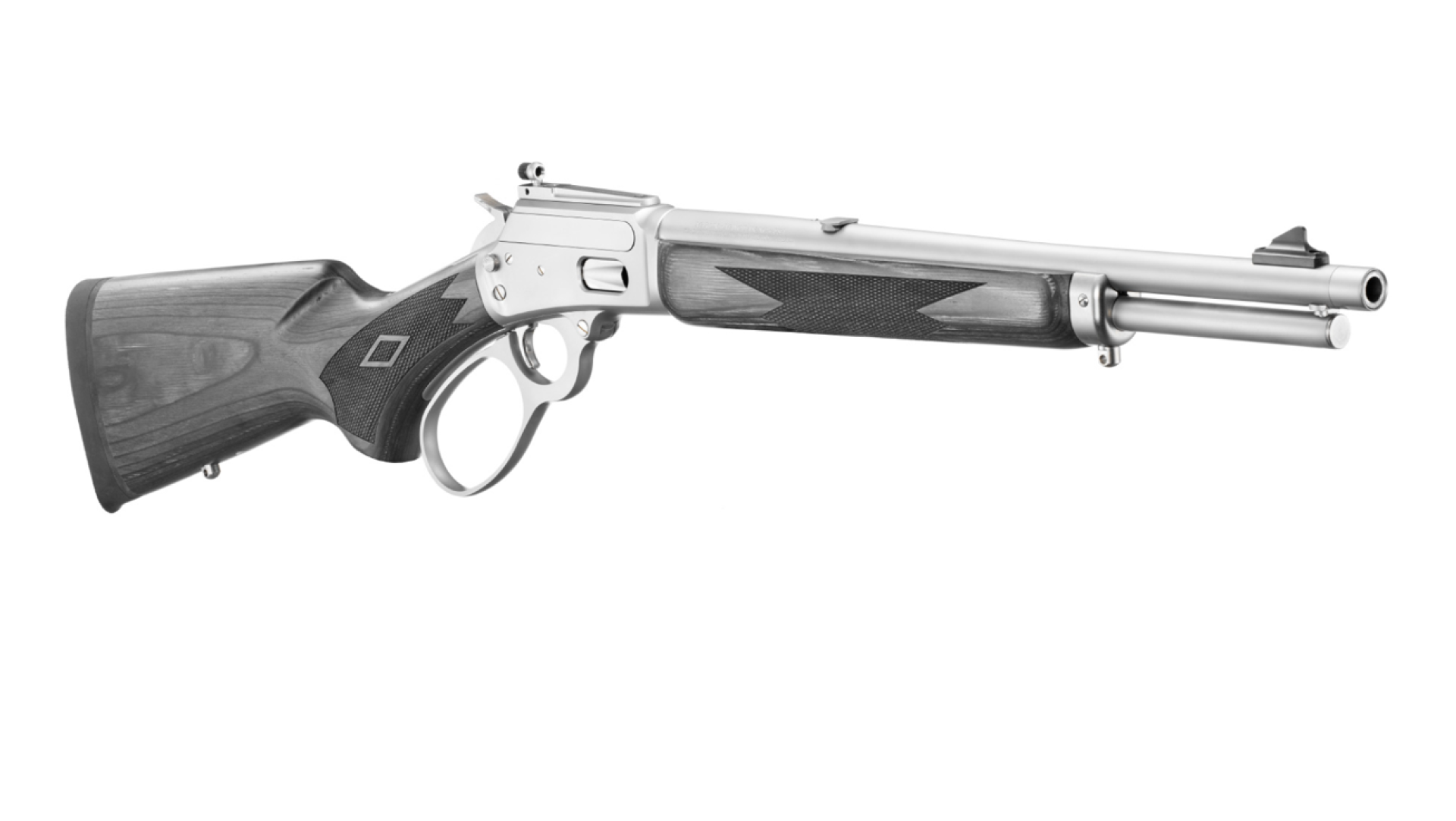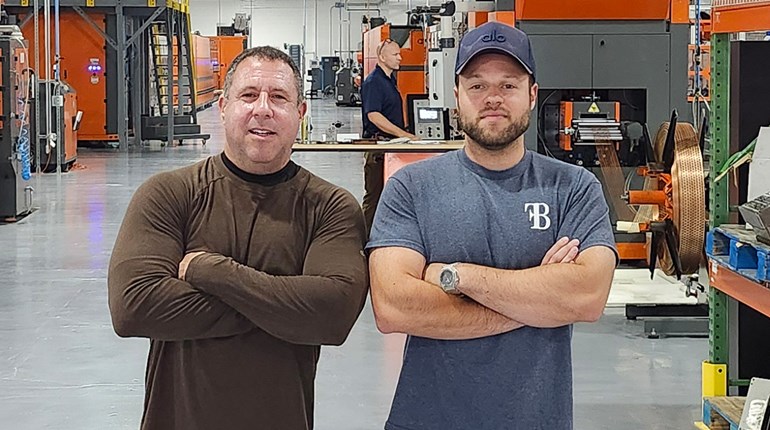** When you buy products through the links on our site, we may earn a commission that supports NRA's mission to protect, preserve and defend the Second Amendment. **

The first bullets were simple cast-lead balls. With the advent of rifling in barrels, spin stabilization made elongated bullets possible. The field of bullet shapes then expanded enormously. Today, we recognize the following shapes of elongated bullets: round nose, semi-round nose, flat nose, wadcutter, semiwadcutter, pointed or spitzer-tangent ogive. Additionally, modern bullets are offered with several base configurations.
1. Flat: Flat-base bullets are the most common type, as well as the easiest to manufacture. This base is found on many hunting rifle bullets and most handgun bullets.
2. Hemispherical: This type of base is rarely seen in the United States; occasionally used on some hunting bullets in Europe.
3. Boattail rebated: Boattail bullets are a popular choice for target shooting and hunting at long ranges by virtue of their streamlined, low-drag design. The rebated design is not as efficient as the standard boattail, but is easier to manufacture.
4. Boattail-standard: This type of boattail bullet is by far the most popular low-drag design. For maximum efficiency, the angel and length of the boattail vary with the bullet diameter, length and weight.
5. Hollow or recessed: This type of base is often found on handgun bullets where an effort has been made to maximize bearing surface and/or gas sealing. This type of base is seldom used in modern rifle bullets.
To this mix, we add the distinct types of bullets, such as:
1. Full-metal-jacket (FMJ): This is a common type of military design that can also be used for practice, training, qualification and some types of competition and hunting.
2. Hollowpoint: This very popular expanding design is common on many handgun bullets and lightweight, small-caliber rifle bullets for varmint hunting. It is also a dominant design for rifle competition. Hollowpoint hunting bullets in calibers over 6mm are somewhat rare.
3. Softpoint: The expanding soft-point bullet remains the popular jack-of-all-trades for nearly all types of hunting. It is not nearly as popular as the hollowpoint in handgun calibers.
4. Hollow softpoint: This combines the best of hollow- and soft-point designs in a revolver bullet. The design is seldom used outside of revolver bullets.
5. Capped: This is a rifle bullet design with a soft metal cap over the soft point that collapses on impact, aiding expansion. A fairly rare design, the chief example in contemporary bullets remains the Winchester Silvertip.
6. Tipped: This type of expanding hunting bullet features a metal or plastic tip on the ogive that is designed to prevent tip deformation in the magazine, enhance the ballistic coefficient and assist expansion on impact. Older examples include the Remington Bronze Point, while newer examples include the Nosler Ballistic Tip.
7. Frangible: Frangible bullets are usually lead-free bullets made of composite materials that are designed to break up into small particles on impact with a hard surface.
8. Bonded: Reliability in the field has made bonded bullets, like the Swift A-Frame and Scirocco, Trophy Bonded Bear Claw and Hornady InterBond, a favorite of savvy big-game hunters. Bonding the core to the jacket ensures the controlled-expansion performance so desirable on heavy game animals like elk, moose and bear.
9. Solid: Solid bullets may be either monolithic (made of one piece of homogeneous metal) or heavily jacketed with a lead core. In addition, some hybrid types combine a monolithic body with a heavy metal insert. The purpose of a solid is to reliably penetrate heavy or dangerous game. Examples include the Barnes Solid and the Woodleigh Weldcore.
10. Hybrids: These bullets combine two or more of the above characteristics, often with a unique twist of their own. Examples include the Nosler Partition, Winchester FailSafe, Hirtenberger ABC and Brenneke TUG.
1. Flat: Flat-base bullets are the most common type, as well as the easiest to manufacture. This base is found on many hunting rifle bullets and most handgun bullets.
2. Hemispherical: This type of base is rarely seen in the United States; occasionally used on some hunting bullets in Europe.
3. Boattail rebated: Boattail bullets are a popular choice for target shooting and hunting at long ranges by virtue of their streamlined, low-drag design. The rebated design is not as efficient as the standard boattail, but is easier to manufacture.
4. Boattail-standard: This type of boattail bullet is by far the most popular low-drag design. For maximum efficiency, the angel and length of the boattail vary with the bullet diameter, length and weight.
5. Hollow or recessed: This type of base is often found on handgun bullets where an effort has been made to maximize bearing surface and/or gas sealing. This type of base is seldom used in modern rifle bullets.
To this mix, we add the distinct types of bullets, such as:
1. Full-metal-jacket (FMJ): This is a common type of military design that can also be used for practice, training, qualification and some types of competition and hunting.
2. Hollowpoint: This very popular expanding design is common on many handgun bullets and lightweight, small-caliber rifle bullets for varmint hunting. It is also a dominant design for rifle competition. Hollowpoint hunting bullets in calibers over 6mm are somewhat rare.
3. Softpoint: The expanding soft-point bullet remains the popular jack-of-all-trades for nearly all types of hunting. It is not nearly as popular as the hollowpoint in handgun calibers.
4. Hollow softpoint: This combines the best of hollow- and soft-point designs in a revolver bullet. The design is seldom used outside of revolver bullets.
5. Capped: This is a rifle bullet design with a soft metal cap over the soft point that collapses on impact, aiding expansion. A fairly rare design, the chief example in contemporary bullets remains the Winchester Silvertip.
6. Tipped: This type of expanding hunting bullet features a metal or plastic tip on the ogive that is designed to prevent tip deformation in the magazine, enhance the ballistic coefficient and assist expansion on impact. Older examples include the Remington Bronze Point, while newer examples include the Nosler Ballistic Tip.
7. Frangible: Frangible bullets are usually lead-free bullets made of composite materials that are designed to break up into small particles on impact with a hard surface.
8. Bonded: Reliability in the field has made bonded bullets, like the Swift A-Frame and Scirocco, Trophy Bonded Bear Claw and Hornady InterBond, a favorite of savvy big-game hunters. Bonding the core to the jacket ensures the controlled-expansion performance so desirable on heavy game animals like elk, moose and bear.
9. Solid: Solid bullets may be either monolithic (made of one piece of homogeneous metal) or heavily jacketed with a lead core. In addition, some hybrid types combine a monolithic body with a heavy metal insert. The purpose of a solid is to reliably penetrate heavy or dangerous game. Examples include the Barnes Solid and the Woodleigh Weldcore.
10. Hybrids: These bullets combine two or more of the above characteristics, often with a unique twist of their own. Examples include the Nosler Partition, Winchester FailSafe, Hirtenberger ABC and Brenneke TUG.






































